November and December are critical months for online retailers and brands. In fact, these two months alone typically bring in 19% of total sales for the year.
And with 69% of US shoppers planning to shop online this year, optimizing SEO for the holidays has never been more important.
SEO is a long-term investment, which means you need to prepare for Black Friday and Cyber Monday search volume spikes months in advance.
The earlier you optimize your sites for the holidays, the better your chances of ranking well for high-opportunity keywords that can drive more online and in-store traffic and sales.
In this article, we’ll share five simple SEO tips to drive organic traffic to your website no matter whether it is agriculture machinery, perfume, or health business website. Build brand awareness, and convert more visitors into paying customers this holiday season.
Let’s dive in.
Start with an SEO audit
An SEO audit is a perfect place to start when getting your site ready for holiday traffic.
It’ll help you uncover problems that might hinder your website from reaching its full potential. So, take a step back to investigate any issues, including on-page SEO performance, technical concerns, and structural problems.
The goal here is to show you where your SEO is falling short and uncover any missed opportunities to increase performance.
Regardless of the outcome, an audit will give you a comprehensive picture of where you should direct your efforts to achieve your holiday SEO goals.
Bounce rate
Are your visitors leaving your site as soon as they get there? Are they adding items to their shopping cart and then abandoning it?
All of these things contribute to a high bounce rate, and it’s essential to tackle these issues early on so that your holiday traffic can make a purchase before leaving your site.
Mobile friendly
People around the world are shopping online more than ever, and they tend to do it on their phones.
This trend is especially obvious with last-minute shoppers. They’ll pull out their phone and order something before moving on to the next task before forgetting about it altogether.
Load time
Holiday shoppers are busy, so even a second delay in load times can cause a poor customer experience, increase bounce rates and hurt conversions.
That’s the last thing you want during the holiday rush.
Make sure your content and images load properly. If that doesn’t speed things up, it may be time to look deeper into your website architecture and find other ways to reduce load times.
Keyword research
It may take some time for your pages to start ranking in search results. Still, you can use this audit to see how you’re performing for specific keywords and phrases. Sometimes all it takes is a few simple shifts in your strategy to boost your online visibility this holiday season.
Start targeting long-tail keywords that users are searching for when looking for that perfect gift for their loved one.
Content gaps
What content do your customers want to see this holiday season? And how can you make sure they see it?
Also, what topics are your competitors ranking for that might be missing on your site?
There are always new angles and opportunities to address your customers’ pain points and encourage them to take action.
Conducting an SEO audit can be time-consuming, but it’s an essential part of any SEO strategy, especially leading into the holiday season.
A good audit should reveal problems that hinder your website’s performance in ranking on SERPs, outline a clear path on how to fix them, and get you on your way to capitalizing on the holiday search traffic.
Conduct keyword research
Discovering keywords with high search volume and low difficulty is like waking up on Christmas morning. Magical.
Keywords are the exact terms that your audience is typing into Google. They allow you to capitalize on your target market’s pain points and interests.
And if you find a sweet spot, you can drastically improve your organic search traffic.
But most people make the mistake of targeting broad terms that are extremely difficult to rank for.
It’s tempting to create content for a highly searched term like “Christmas trees,” but that’s way too competitive. Notice how the first page of Google only shows product pages for all the big players like Target, Home Depot, and Walmart.
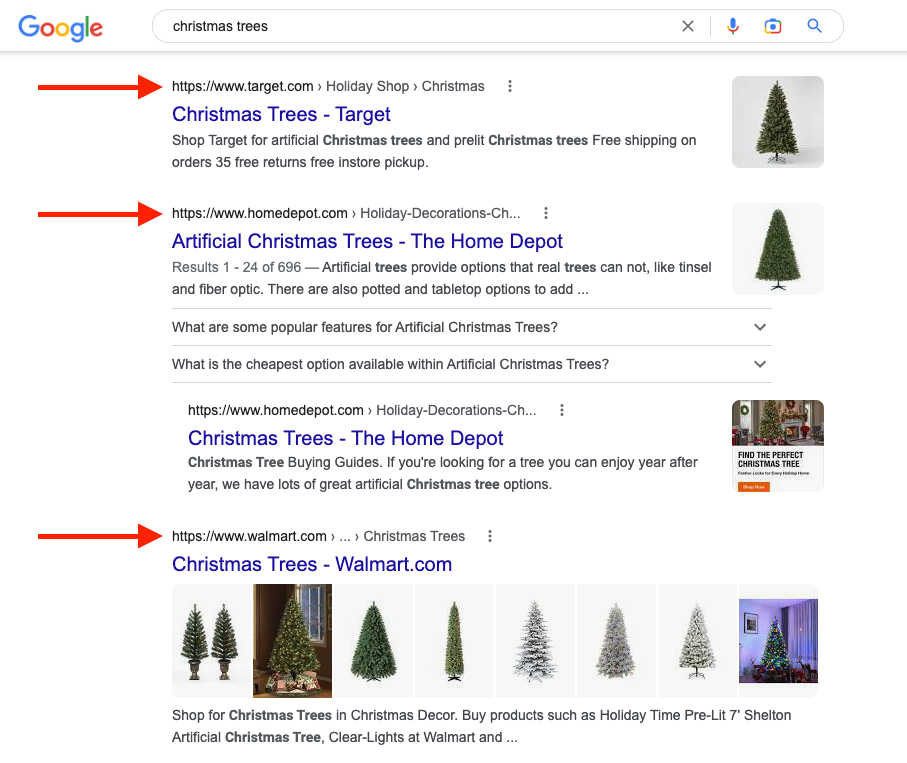
Instead, focus your efforts on segmenting your keyword research and creating content for less competitive keywords that still have a high potential for success.
Top-of-the-funnel keywords
For the top-of-the-funnel keywords, focus on exact match phrases and long-tail keywords that your niche is searching for.
For example, with higher shipping demands during the holiday season and icy road conditions, telematics companies might be searching for safety solutions to help keep their drivers safe during the winter months.
Samara hits the nail on the head with this blog post about driver vehicle inspection reports. Instead of targeting the broad “DVIR” keyword, they focus on the phrase “what is a drier vehicle inspection report.”
They also answer frequently asked questions that target other long-tail keywords throughout their content to improve their chances of ranking across keywords.
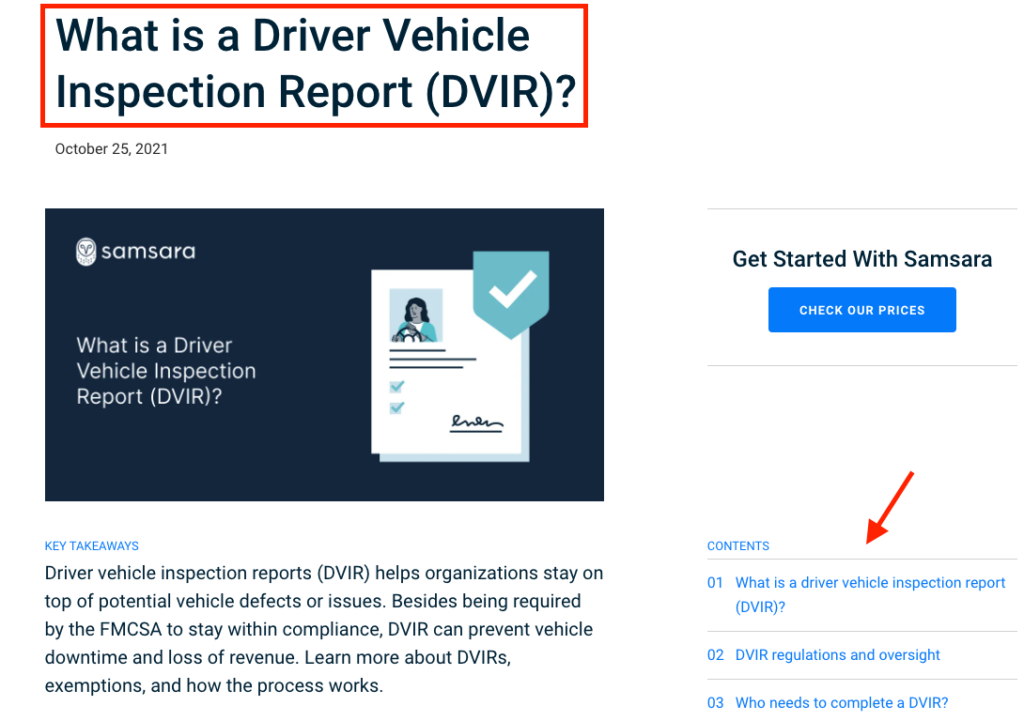
This is an excellent piece of content that focuses on providing value to searchers (that isn’t too spammy) and builds passive brand awareness.
Middle-of-the-funnel keywords
Middle-of-the-funnel keywords should focus on specific benefits, features, and product comparisons.
For example, a post comparing the best laptops on the market is the exact type of content someone in the consideration stage of the buyer’s journey is looking for.
They know they want to purchase a laptop but need help making an informed decision on the exact model to purchase.
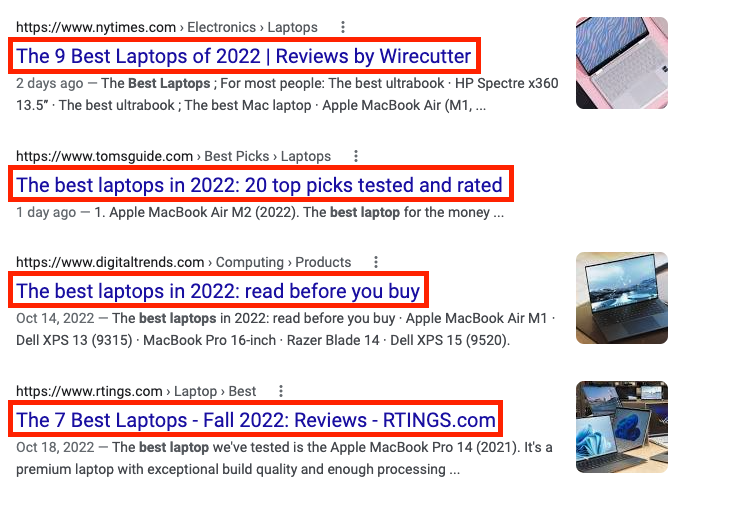
These are fantastic articles and tools for lead generation. You can rank for hundreds, if not thousands, of keywords using this strategy.
And when done well (without tooting your own horn too much), it can drive volumes of sales-qualified leads.
Bottom-of-the-funnel keywords
Bottom-of-the-funnel keywords tend to be branded searches that indicate a customer is on the cusp of buying your product.
So if you are in the video gaming industry, and someone searches for “Fortnite Rebirth Harley Quinn Skin” instead of “best Fortnite skins”, it signifies a high intent to purchase.
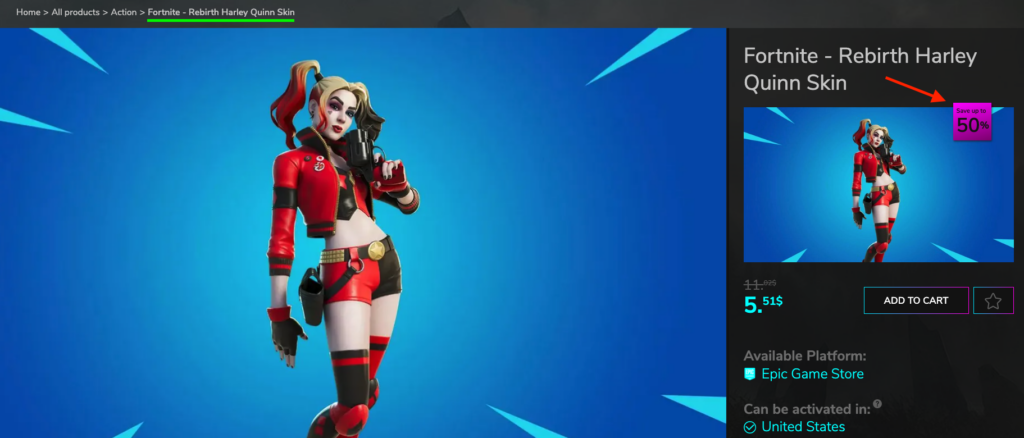
Make sure to reduce friction in the purchase process by optimizing your landing page with a clear call-to-action (like including an “add to cart” button).
It doesn’t hurt to include a discount or a coupon code to further improve conversion rates and reduce shopping cart abandonment
Publish content early and often
Providing fresh, relevant content to your target audience helps grow your organic visibility on search engines and turns visitors into paying customers.
Ideally, you should publish holiday content in the summer months. That way, you have plenty of time for Google to index your content and rank it on the first page of the SERP before the holiday search volume picks up steam.

Don’t wait until the last minute to get started. Use the following content framework factors for best results:
- Goals: What is the purpose of your content? Are you looking to build awareness, generate leads, close sales, or all of the above?
- Audience identification: Who’s your target audience? What do they care about?
- Segmentation: Avoid the one-size-fits-all approach when you have multiple target audiences. Create a separate content strategy for each audience segment.
- Funnel Stage: Focus on creating content that aligns with the intent during all stages of the buyer’s journey.
A successful content strategy for genuine organic growth is more than just hitting the publish button. Quality over quantity is the name of the game here.
Also, it’s the holidays, so remember to give your landing pages a festive feel.
Repurpose already existing visual content with the help of a photo editor to add colorful backgrounds, festive icons, and other edits to bring holiday cheer to your website.
Look at this banner graphic on the landing page of Macy’s holiday gift guide, as an example. Instead of using the standard Toys “R” Us logo, Macy’s added a cartoon Christmas tree, a few snowflake graphics, and bright colors to make the content stand out.
The small details matter. Give yourself ample time to publish high-quality content on your landing pages and your blog to capture the attention of holiday shoppers this season.
Review your on-page SEO
On-page SEO is the process of optimizing your blog posts and product pages, so they’re indexable by search engines.
To improve rankings, user experience, and more, here are a few key factors to keep in mind when optimizing your content:
Add a meta title, description and short URL
The first step in optimizing your web page is to add a meta title and description to your site’s code. This information tells Google what your site is about and entices clickers to click through to your site.
You can optimize your page for long-tail keywords by using the words “best,” “guide,” or “cheap” in your title.
Your meta title should be between 60 and 70 characters long, and the meta description should be between 150 and 160 characters long. Both should include your targeted keyword.

Your URL shows above the title tag in mobile and desktop SERPs.
The last thing you want is for your URL string to look spammy or irrelevant to the user’s search.
It’s effortless to keep your URL SEO-friendly. All you need to do is keep it short and include the keyword. Plain and simple.
Optimize images
As the saying goes, a picture is worth a thousand words. But don’t let these images go to waste.
Take advantage of alt text — it is an alternative method for people who can’t see your content. It also helps Google understand what your image is about.
Make sure your images don’t slow down your page speed by compressing them and converting them into a friendly file format like a JPG.
And finally, avoid stock images.
Although adding stock photos to blog posts saves time, research shows that adding unique images to your website outranks those that rely on stock images alone.
Plus, custom images help show your customers additional context. For instance, MVMT Watches makes it a priority to include pictures of their watches on the wrist and not just in the box.

Outrank your competitors by creating custom images and providing more value to your readers.
Build internal links
Internal links are the most underappreciated SEO strategy and they serve multiple purposes.
They help pass along link juice from high-authority pages to low-authority pages.
Use an SEO tool to find the pages on your site with the highest authority (i.e., focus on pages with quality backlinks) and then add that link to pages with lower authority.
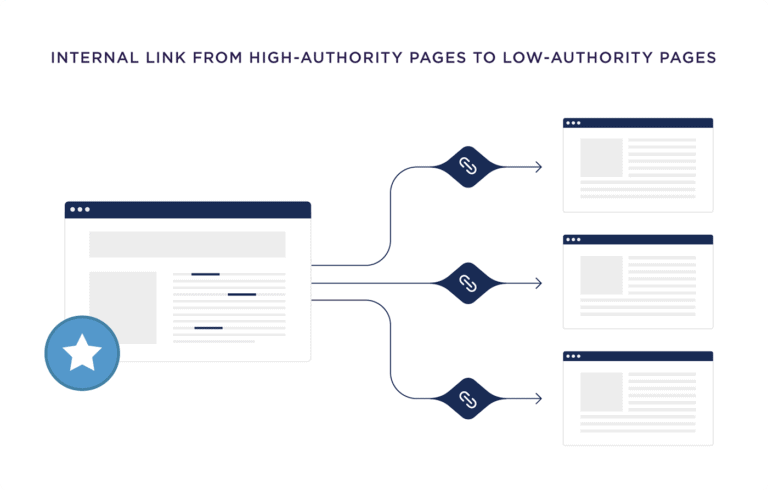
Internal links also help users navigate quickly and effectively through your site. The longer visitors spend on your site, the more likely they’ll be to make a purchase.
Finally, internal links help Google understand which pages on your site are related, which can help improve the speed at which Google indexes your new content.
Prioritize site speed
You’ll generate traffic to your website via high-quality content and on-page SEO. But all your efforts will go to waste if your site isn’t up to snuff.
Your website should be fast enough that it loads within three seconds.
Even though a few seconds doesn’t seem like much, it can mean the difference between keeping your traffic or losing it to your competitors.
Every second counts. The last thing you want is your traffic bouncing off your site before you even have the chance to share what you have to offer this holiday season.
Bounce rate and page speed are “dwell time” factors that can affect your ability to rank on search engines. If Google notices that users are clicking your post but immediately bouncing away without reading or interacting with it, your content won’t rank first on SERPs.
To speed up your site, use Google’s PageSpeed Insights tool to test your load time.
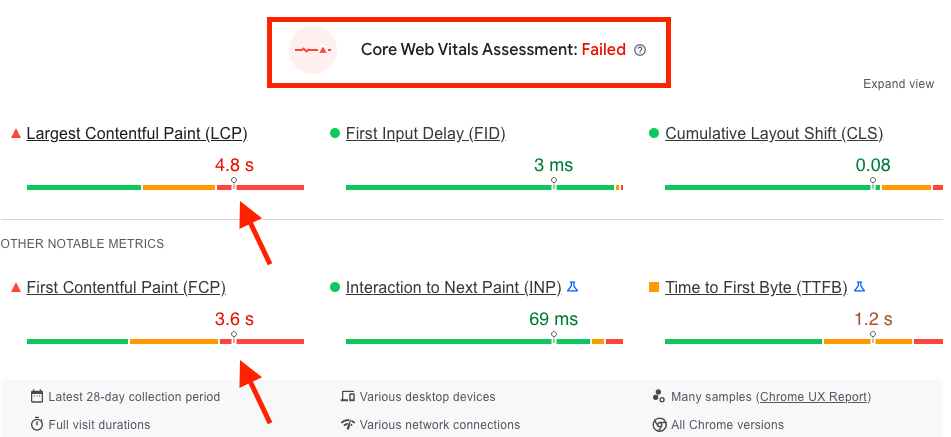
If it’s above three seconds and fails the Core Web Vitals Assessment, improve your site’s performance by following Google’s recommendations.

Wrapping up
SEO for the holidays is easy to underestimate. It’s not as simple as publishing 50 gift guides and calling it a day.
You need to prepare for a potential uptick in traffic, research the keywords your audience is searching for this year, and provide the best possible experience on your website – all in a short period.
Now is your chance to cash in on the holiday shopping season by optimizing your site for organic search. Use the above tips to boost your website traffic and score more sales this holiday season. You won’t regret it.








